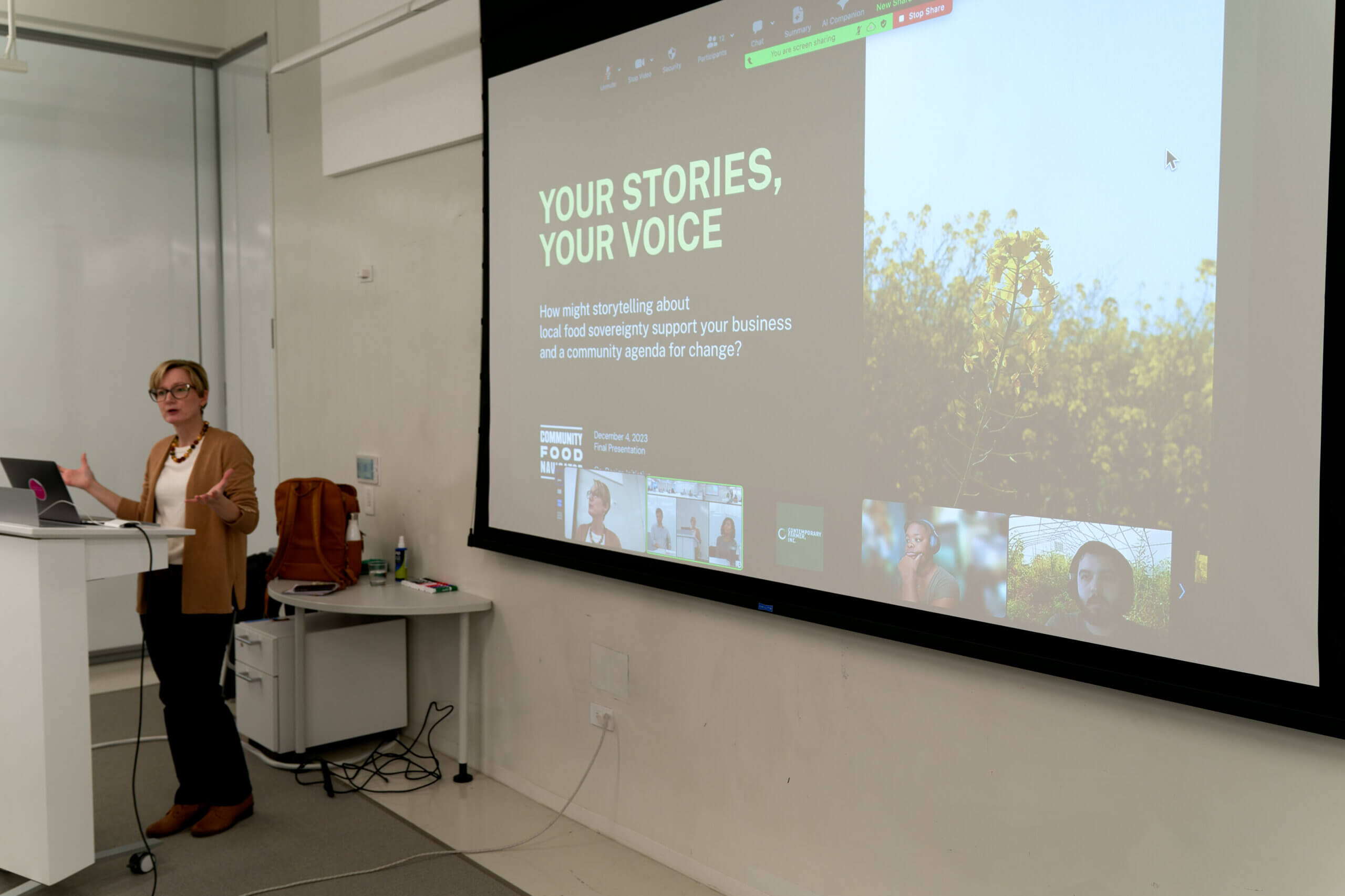
Food is more than a meal or a snack. What people eat is closely tied to their history, culture, and identity.
Yet stories about why we eat what we eat often go untold, or are distorted or incomplete. That reality has far-reaching implications for Black, Brown, and Indigenous communities, leading to a disconnection to the land, food illiteracy, poor nutrition, and chronic disease.
According to the Greater Chicago Food Depository, one in five Chicago households are experiencing food insecurity, which is defined as a lack of consistent and adequate access to nutritious food. The problem is especially pronounced in communities of color. In 2017, food insecurity affected up to 85 percent of the population in some predominantly Black and Brown neighborhoods on the South and West sides of the city—a problem that worsened during the epidemic.
In Riverdale, a community on Chicago’s South Side that is 95 percent African American, 99.85 percent of the residents have low food access, defined as living further than a half-mile from the nearest supermarket, according to Chicago Health Atlas. On the Near North Side, where 70 percent of residents are white, everyone lives within a half-mile of at least one supermarket, giving them plentiful grocery options.
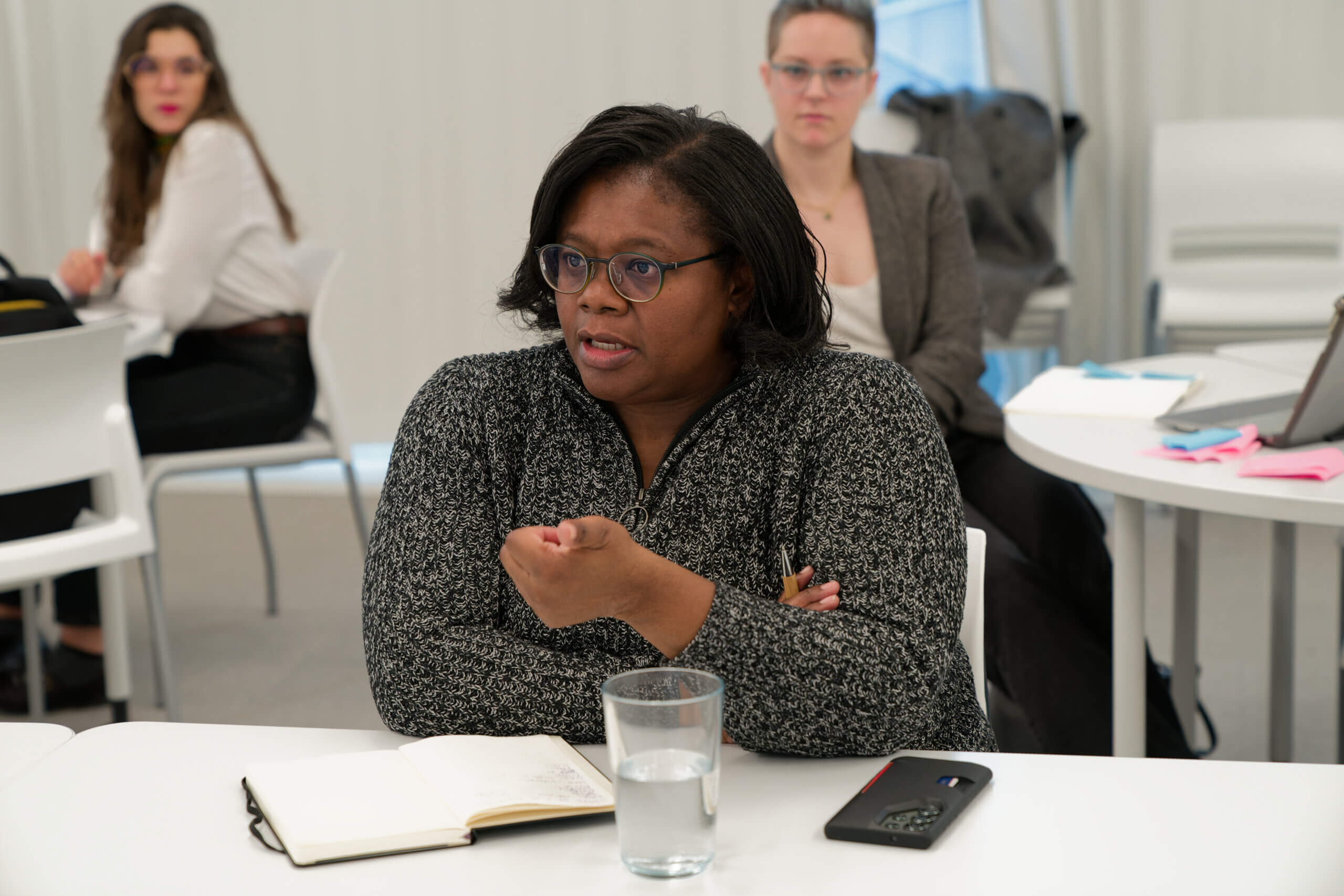
Lisa Tallman, Project Executive Director, Community Food Navigator
The 14-week Co-Design and Social Interventions course was held August through December 2023 in partnership with Community Food Navigator, a nonprofit creating a more just and equitable food system by strengthening connection and visibility across Black, Brown and Indigenous food growers and producers, mobilizers, organizers, educators, and advocates.
The Navigator and the community it supports are working to achieve greater food sovereignty—namely, a food system in which the people who produce, distribute, and consume food also control its production, distribution, and governance.
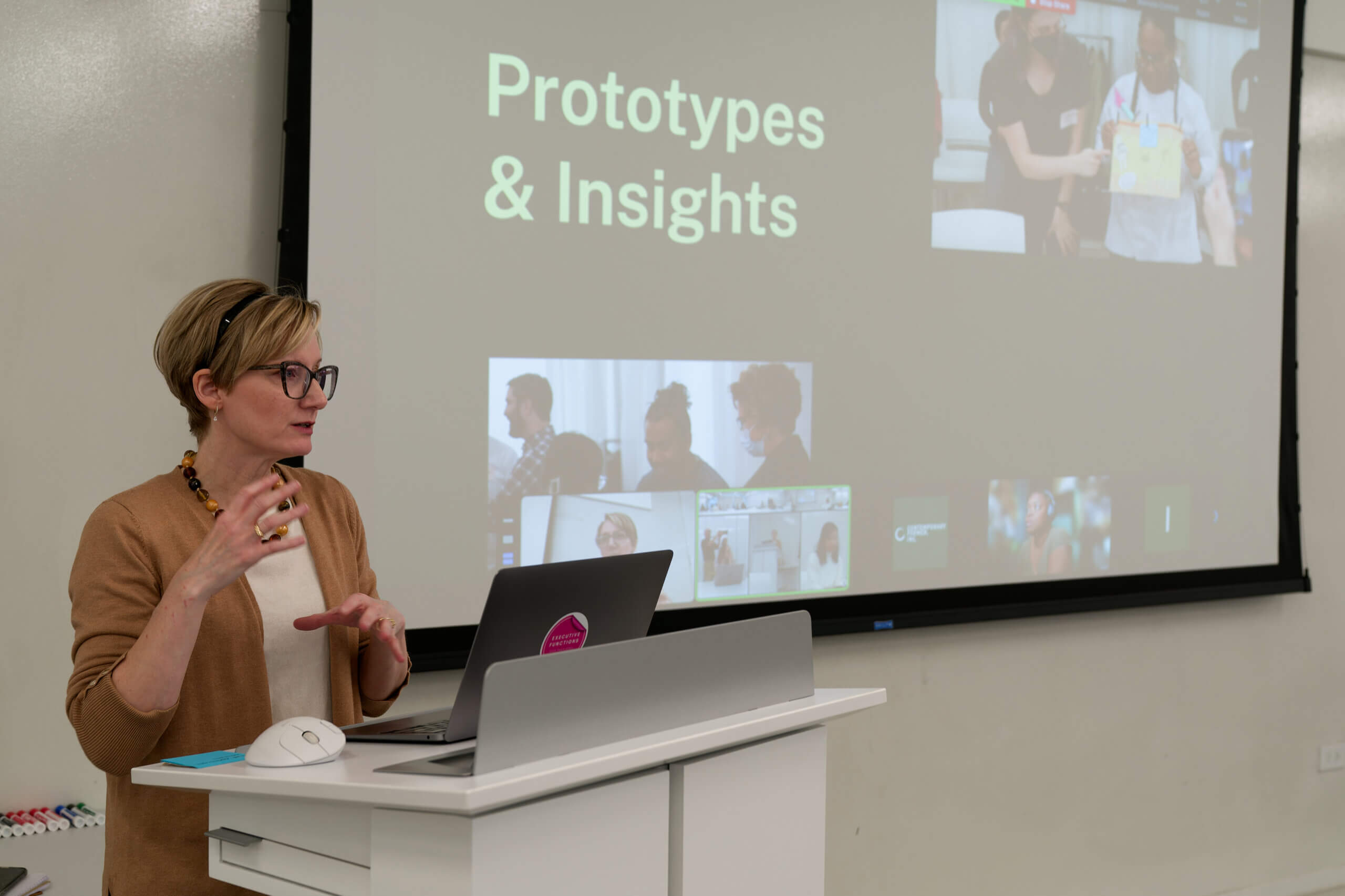
Cheryl Dahle, ID Adjunct Professor, and CEO of Flip Labs
To help The Navigator harness that power, ID students conducted research and interviews, and hosted a co-design session. A final presentation and slide deck prepared for The Navigator summarized the research and co-design process, as well as shared renderings of ideas that surfaced in the workshop.
Students helped set the context by providing insights and analysis that The Navigator partners don’t have the resources or time to assemble, and they highlighted storytelling opportunities for them to consider.
The Navigator aims to reframe conversations about food. For example, the widely used term “food desert” is misleading because it implies that lack of food access is a naturally occurring phenomenon and not due to structural racism or marginalization.
The Navigator’s community partners have different operations and histories but share common values and goals. Students recommended that they develop a collective voice and agenda. Doing so would create a platform for doing bigger things and moving forward together.
“We saw that the community was hungry for a shared identity around a set of goals for achieving food sovereignty,” says Dahle, who joined ID in 2020 and works at the intersection of design and social change. “They felt connected because their work was related, but they wanted something even more specific, and they wanted something that felt like it was heading somewhere.”
Now, following the ID team’s advice, The Navigator will enlist community members to help conduct interviews and collect stories, which will be shared in an organized, community-centric way. By having community members help interview farmers and others, they expect to better capture diverse perspectives and learned experiences.
The next step is to collect stories of growers about their journey in growing, whether it’s a community garden or an urban farm—their highs and lows, and the challenges they faced along the way.
Through 2024, The Navigator will collect those narratives and lessons learned, and tell those stories in a variety of ways and mediums. By collecting those stories in one place and having those resources available, “people can take their next step, from whatever place they are at, in their journey in the food system,” Tallman says.
Recommendations

Cheryl Dahle, ID adjunct professor, and CEO of Flip Labs
Prioritize Storytelling
Tallman says the recommendation to prioritize storytelling will help with collecting and disseminating stories and give stakeholders a sense of ownership. Content could be tailored to different audiences, such as city residents or elected officials, or be used for raising awareness about issues or marketing a business.
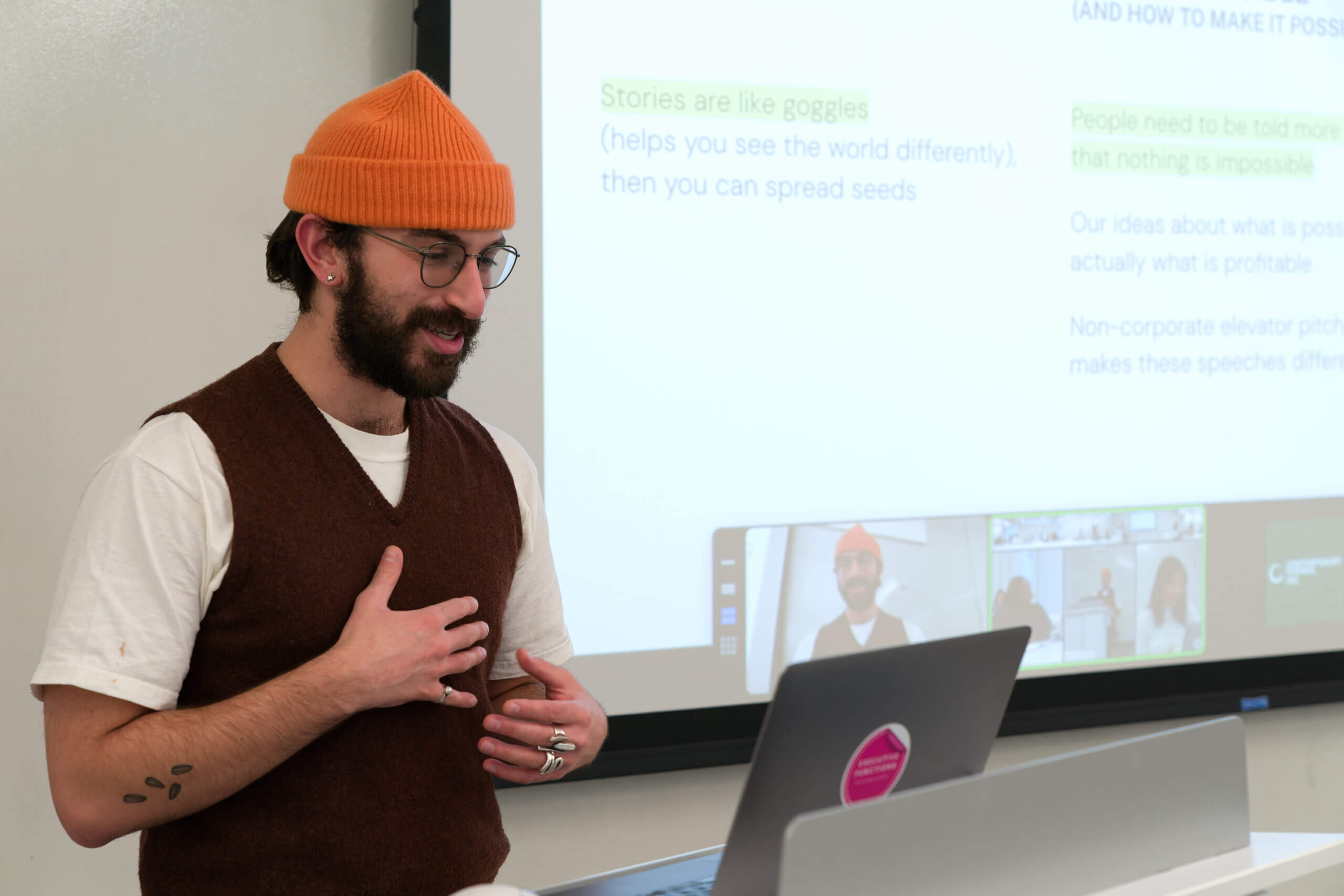
View Stories Like Snorkeling Goggles, and Spread Stories Like Seeds
Another recommendation was to view stories like snorkeling goggles. Just as goggles help a swimmer see the world differently, stories can change perceptions.
Another idea centered on spreading stories, and the new behaviors that they cultivate, like a person would scatter seeds, a fitting agricultural analogy.
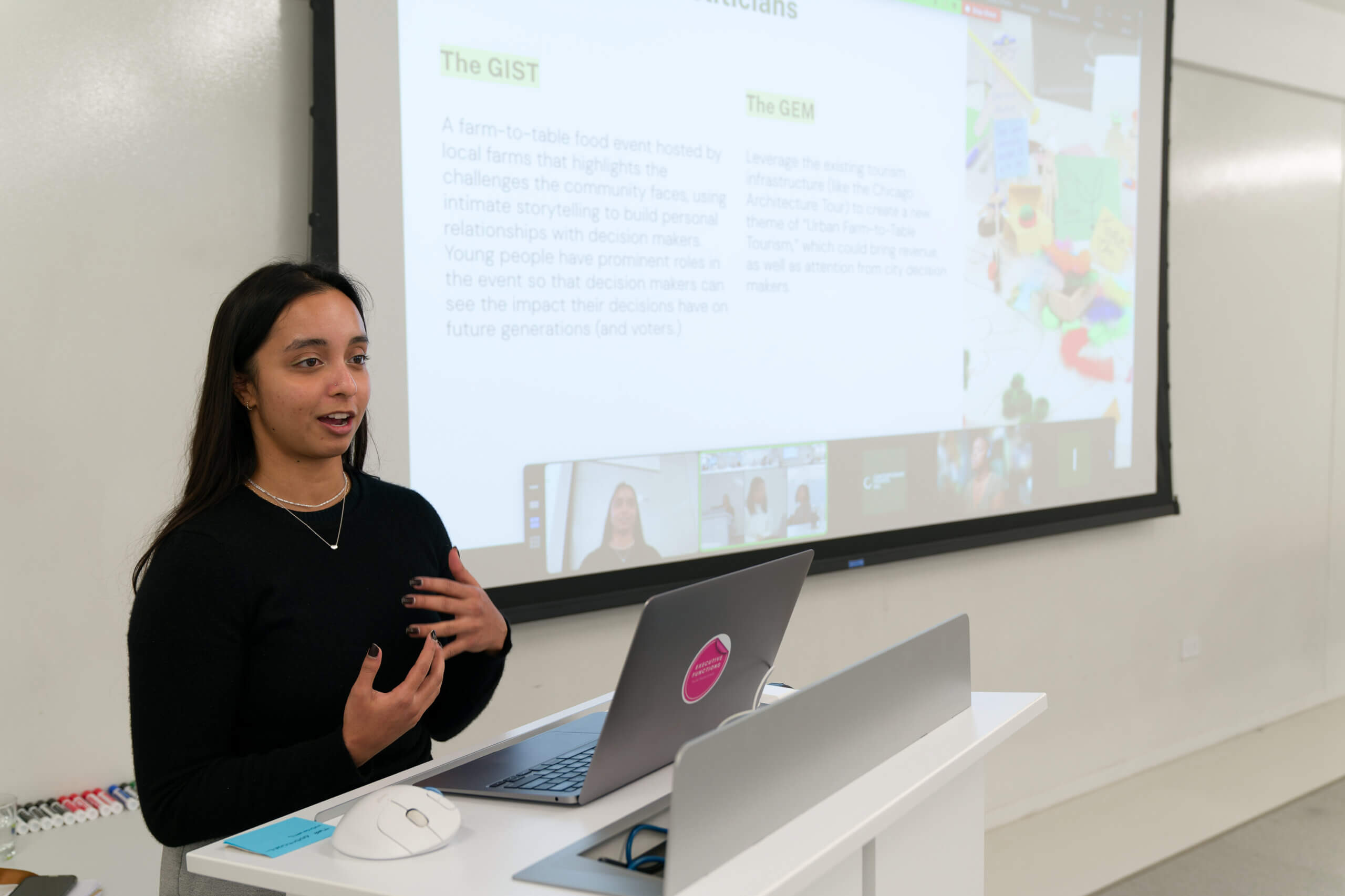
Host a Farm-to-Table Event
Local farms could host a farm-to-table event to highlight the challenges that communities face, using intimate storytelling designed to build closer relationships with elected officials. This effort could potentially connect to the city’s tourism infrastructure, creating urban farm-to-table tourism, which could bring revenue, as well as greater attention from city leaders. Talks are underway about expanding a similar existing activity.
Consider an Intervention Program
An intervention program could be developed that helps people build a deeper connection with their food during times of life transition. Participants would visit farms to eat nutritious foods from local sources. During bus rides to the locations, they also would be equipped with VR headsets with information about how life changes affect dietary needs. The personalized immersive experience would be designed to challenge participants’ misconceptions about food.
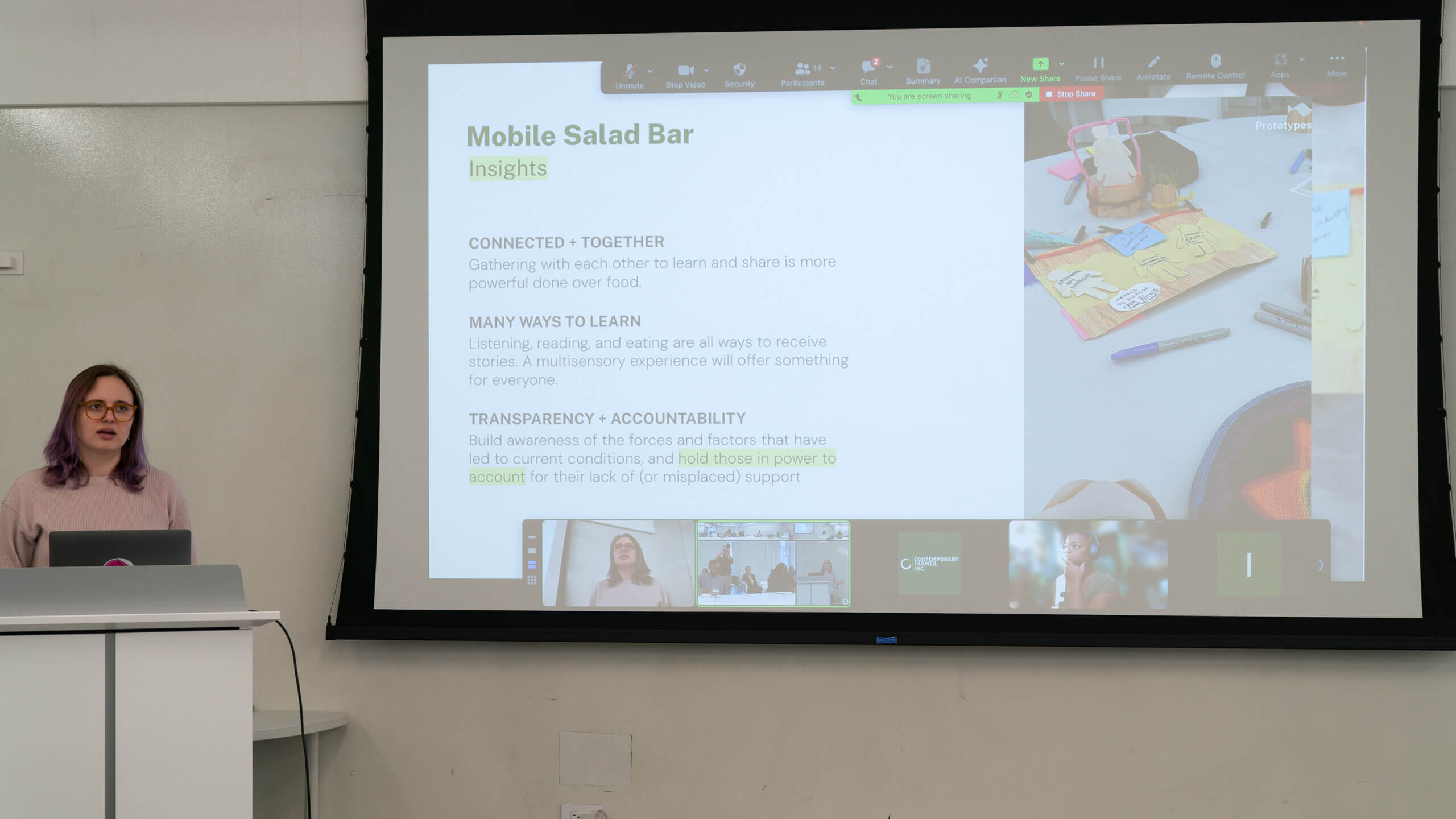
A Mobile Salad Bar
A mobile salad bar could be created to deliver food and stories to communities, along with opportunities for people to interact with growers, chefs, and others. Diners would learn about local growers, restaurants, and recipes, as well as the positions and decisions of local policymakers on food-related issues.
Relationship building is key to projects involving social innovation and community-based work. Dahle says several students ventured outside the classroom on their own to learn more.
First-year graduate student Robbie Masato King visited an urban garden “to pull weeds and break bread” to gain valuable perspective.
The course underscores that social problems are solvable.